Malaysian Shipping Notice MSN 10/2021 (PART 6), Resolution MEPC.333(76) - 2021 Guidelines on The Method of Calculation of The Attained Energy Efficiency Existing Ship Index (EEXI) (in force on 1 January 2023
This sixth article on Malaysian Shipping Notice MSN10/2021, is on the Sixth Resolution by the Marine Environment Protection Committee (MEPC) of the International Maritime Organisation (IMO) at its 76th Session.
The article outlines the adoption of the 2021 Guidelines to calculate the EEXI pursuant to Regulation 23 of MARPOL Annex VI. Each ship should have a unique EEXI, especially one that has undergone a major conversion of 400 gross tonnage and above. The article also outlines verification of the ship's attained EEXI in accordance with Regulation 23 following the first annual, intermediate or renewal survey of the ship (whichever is applicable) taking place on or after 1 January 2023.
Resolution MEPC.333(76) was introduced into Malaysia via Malaysian Shipping Notice MSN 10/2021. The Resolution stipulates that the 2021 Guidelines will be under review in the light of the lessons learnt from implementation of the EEXI Regulations which will be completed by the International Maritime Organisation (IMO) by 1 January 2026 (see Regulation 25.3 of MARPOL Annex VI).
Resolution MEPC.333(76) contains multiple complex mathematical formulae. The author does not intend to deal with any of these formulae mathematically. This article will be confined to the legal obligations of the various provisions in the 2021 Guidelines on the Method of Calculation of the Attained Energy Efficiency Existing Ship Index (EEXI). For the purposes of this article, the definitions found in the International Convention for the Prevention of Pollution from Ships 1973, as modified by Protocols 1978 and 1997 (MARPOL) are applicable, see Paragraph 1.1. In particular, the 2021 Guidelines apply MARPOL Annex VI (as amended), see Paragraph 1.2.
The Energy Efficiency Existing Ship Index (EEXI)
The EEXI Formula
The EEXI formula is a mathematical measure of a ship's energy efficiency, see Paragraph 2.1. The formula provided for in Paragraph 2.1 has a limitation. It may not be applicable to ships having hybrid propulsion systems. For example, diesel-electric propulsion, or turbine propulsion, unless the ship concerned is a cruise passenger ship, or LNG Carrier. About a decade ago, ships were subject to an Energy Efficiency Design Index (EEDI). Using the formula in Paragraph 2.1, the EEDI can be calculated in accordance with the 2018 Guidelines on the Method of Calculation of the Attained EEDI for New Ships (hereinafter referred to as the EEDI Calculation Guidelines) introduced via Resolution MEPC.308(73). This calculated EEDI value which can be used as the 'attained EEXI value', is the EEDI value that is at least equal to or less than that of the required EEXI.
The Parameters
In calculating the attained EEXI using the formula in Paragraph 2.1, the parameters in Paragraph 2.2 apply, unless expressly provided otherwise, see Paragraph 2.2. Further, any reference in the terminology to 'EEDI' should be read as 'EEXI', see Paragraph 2.2. This is a reflection of the fact that in reality, EEXI is actually the EEDI for 'Existing Ships'.
There are 7 specific parameters to look at:
[1] Power of Main Engines, P (ME(i));
[2] Power of auxiliary engines, P (AE(i));
[3] Ship speed, V (ref);
[4] Certified Specific Fuel Consumption, SFC;
[5] Conversion factor between fuel consumption and CO2 emission, C(F);
[6] Correction factor for ro-ro cargo and ro-ro passenger ships, f (jRoRo);
[7] Cubic capacity correction factor for ro-ro ships (vehicle carrier), f (cVEHICLE).
The appendix has three tables for calculating:
[1] Parameters of V (ref, avg);
[2] Parameters of MCR (avg) or MPP (avg);
[3] Parameters of V (ref.avg) and MCR (avg). Note: This is from the IHS Fairplay (IHSF) database.
The parameters for both tables are unique to the type of ship. The tables contain specific figures for:
[1] Bulk carriers;
[2] Gas carriers;
[3] Tankers;
[4] Containerships;
[5] General cargo ships;
[6] Refrigerated cargo carriers;
[7] Combination carriers;
[8] LNG Carriers;
[9] Ro-Ro cargo ships (vehicle carriers);
[10] Ro-Ro cargo ships;
[11] Ro-Ro Passenger ships;
[12] Cruise ships having non-conventional propulsion.
Thank you for reading IMSML Website Article 30/2022
Stay tuned for the next IMSML Website Article 31/2022:
Malaysian Shipping Notice MSN 10/2021 (PART 7), Resolution MEPC.334(76) - 2021 Guidelines on Survey and Certification of The Attained Energy Efficiency Existing Ship Index (EEXI).
Signing-off for today,
Dr Irwin Ooi Ui Joo, LL.B(Hons.); LL.M (Cardiff); Ph.D (Cardiff); CMILT
Professor of Maritime and Transport Law
Head of the Centre for Advocacy and Dispute Resolution
Faculty of Law
Universiti Teknologi MARA Shah Alam
Selangor, Malaysia
12 November 2022
Note that I am the corresponding author for the IMSML Website Articles. My official email address is: uijoo310@uitm.edu.my
